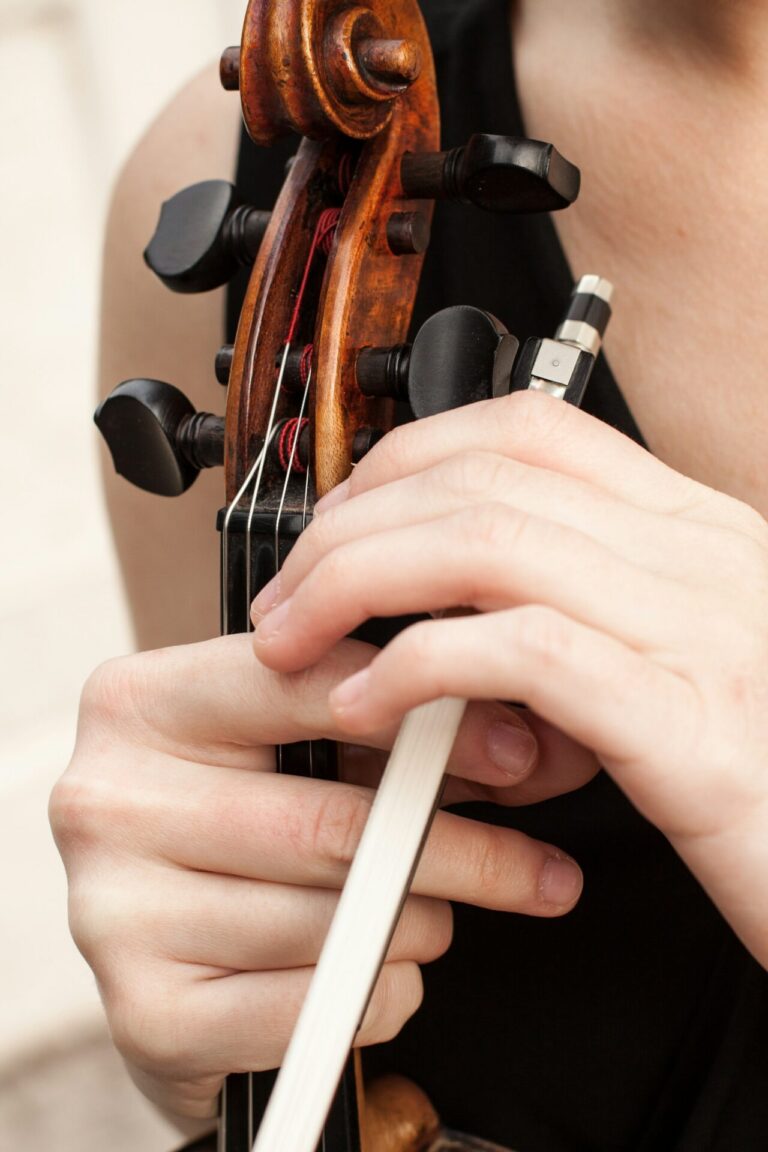Would like to know at least 7 reasons why Twinkle Twinkle Little Star is the best first violin song for you to learn?
When someone asks you, “what was your first song on the violin?” Probably your answer was “Twinkle, Twinkle Little Star”
Twinkle Twinkle Little Star is one of the first songs that is taught on the violin? But why?
This melody is present not only in the violin literature but among all instruments. All beginners played at least once this famous tune during their first stages of learning.
The poem “Twinkle, Twinkle, Little Star” was written by English author Jane Taylor and published in 1806 as “The Star.” Later, the poem was set to the tune of “Ah, vous dirai-je, Maman.”
(The first time the words and music were heard together was in 1838.)
As you may have guessed, this isn’t the only set of alternative lyrics for the song.
In The Suzuki Method, this is the first “full song” we learn and is possibly considered the most important and useful song in the repertoire. But why?
Dr. Suzuki used this melody to build the base of his method, using not only the main melody but also different rhythm variations to help the beginner students develop rhythm, bow control, and tuning.

Below are listed 7 reasons why Twinkle is the best first violin song for beginners
1 – Everybody knows this melody
Known as famous a Folk Song, its tune is present in other very popular tunes such as:
– The Alphabet Song (A, B, C, D, etc)
– Baa-Baa Black Sheep
2 – Starts with open strings
What is easier to play on the violin than open strings? The first little phrase of this melody starts with two open strings right away! Setting the tuning reference to all fingers that are coming ahead.
3 – Embedded descending scale
Right after that first part of the melody where we used open strings, comes a section with a simple descending scale, resolving again on the open string.
The use of a scale like that gives a good melodic reference and helps us stay in tune!
4 – Simple ABA form
ABA form is a musical structure where the first section (A) is repeated after a brief variation (B). This symmetrical form helps the listener to be familiar with the music material that is being presented.
5 – Easy rhythm
The twinkle theme has one of the clearest rhythms possible! A constant sequence of short notes (quarter-notes) ended with a longer note (half-note). Making it so easy to not miss anything!
6 – Variation Friendly
As this melody is so simple and with the right amount of elements, it’s very easy to make variations with it. Making it very useful to learn more advanced music skills, such as bowing or finger patterns.
Shinichi Suzuki arranged 5 variations to help students learn the violin and probably nowadays this is the most played version of this tune.
Also, very known variations were Twelve Variations on “Ah vous dirai-je, Maman”, K. 265/300e by W. A. Mozart.
Below you can see another set of variations on Twinkle, Twinkle little star by Hillary Hann
7 – Easy to transpose
As is such a simple melody to play, is very easy to transpose it to any key you like! For the beginner violinist, you can do it by simply playing starting on a different open string! With just one fingering you will have the same tune in the keys of A Major, D Major, and G Major.
Wanna learn how to play Twinkle Theme? or how to play Variation A?
Below you can see some of my Youtube videos showing how to do it.
Let me know if you have any questions! leave a comment below!
You can find more useful content on my resources page!
Good Practice!



